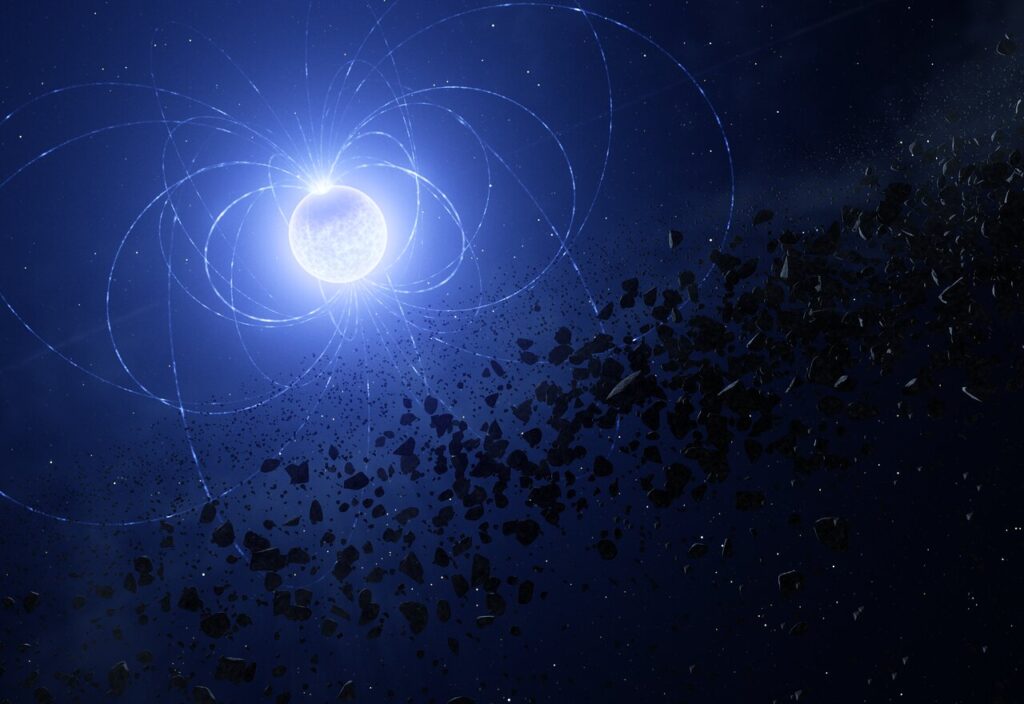When a star like the Sun reaches the end of its life, it can “ingest” planets and asteroids from its surroundings that were born with it. Now, with the help of Very Large Telescope (VLT) at the European Southern Observatory (ESO) in Chile, researchers found for the first time a unique signature of this process: a kind of scar on the surface of a white dwarf star.
The results are published today in the specialty journal The Astrophysical Journal Letters.
“It is well known that some white dwarfs, slowly cooling remnants of stars like our Sun, are cannibalizing pieces of their planetary systems. Now we have discovered that the star's magnetic field plays a key role in this process, resulting in a kind of scar on the white dwarf's surface,” said Stefano Bagnulo, astronomer at the Armagh Observatory & Planetarium in Northern Ireland, UK, and lead author. of the study.
The “scar” the team observed is a well-marked concentration of metals on the surface of the white dwarf WD 0816-310, the Earth-sized remnant of a star similar (just a little larger) to our Sun.
“We demonstrated that these metals originate from a planetary fragment as large or perhaps even larger than Vesta, which is about 500 km in diameter and is the second largest asteroid in the Solar System,” explained Jay Farihi, professor at University College London, United Kingdom, and co-author of the study.
The observations also provided clues about how the star obtained this metallic scar. The team noticed that the intensity of metal detection changed as the star rotated, suggesting that metals are concentrated in a specific area of the white dwarf, rather than spread across its entire surface.
The researchers also discovered that these changes are synchronized with changes in the white dwarf's magnetic field, indicating that this metal scar is located at one of its magnetic poles. All of these clues together seem to indicate that the magnetic field funneled metals into the star, creating this mark.
“Surprisingly, the material is not uniformly distributed on the surface of the star, as predicted by theory. Instead, this scar is a concentrated patch of planetary material, held in place by the same magnetic field that guided the falling fragments," said co-author John Landstreet, a professor at the University of Western Ontario, Canada, also affiliated with the Observatory & Planetarium. from Armagh. “We have never observed anything like this until now.”
To reach these conclusions, the team used the FORS2 instrument mounted on the VLT, which allowed scientists to detect this metallic scar and relate it to the star's magnetic field.
“ESO has a unique combination of capabilities needed to observe faint objects, such as white dwarfs, and measure stellar magnetic fields very sensitively,” said Bagnulo. In their study, the team also used archival data from the VLT's X-shooter instrument to confirm the results.
Taking advantage of observations like these, astronomers can determine the composition of most exoplanets — planets that orbit other stars outside the Solar System. This unique study also shows how planetary systems can remain dynamically active, even after they are “dead”.




















Comments